Inverter is a device that converts dc power into ac power at desired output voltage and frequency.The output voltage waveform of an ideal inverter should be sinusoidal. However, the waveform of practical inverter are non sinusoidal and contain certain harmonics. For low and medium power applications, square wave or quasi square wave voltages may be acceptable. For high power applications, low distorted sinusoidal waveform is required.
Types of inverter
According to nature of input source, there are 2 types of inverter
- Voltage source inverter
- Current source inverter
Voltage source inverter has a stiff dc voltage while a current source inverter has a high impedance in series with the dc source.
The output voltage of a VSI is independent of the nature of the load.
Types of voltage source inverter
- Single phase inverter
- Three phase inverter
In single phase inverter, there are 2 types namely
Half bridge inverter
Full bridge inverter
In this article we will see about the single-phase full bridge inverter
Single-phase full bridge inverter
It consists of four switches and four two diodes. Diodes are used to allow bidirectional current in case of non-resistive loads. the single phase inverter produces a square wave output voltage while its current waveform depends on the nature of the load.
Single-phase full bridge inverter-R load
In case of R load, there is no use of feedback diodes.
- When T1,T2 is turned on, the load current flows from A to B. Applying KVL, the voltage across the load is + Vs.
- When T1T2 is turned off and T3T4 is turned on, the load current flows from B to A. Applying KVL, the voltage across the load is – Vs.
- For resistive load, voltage and current are in phase.
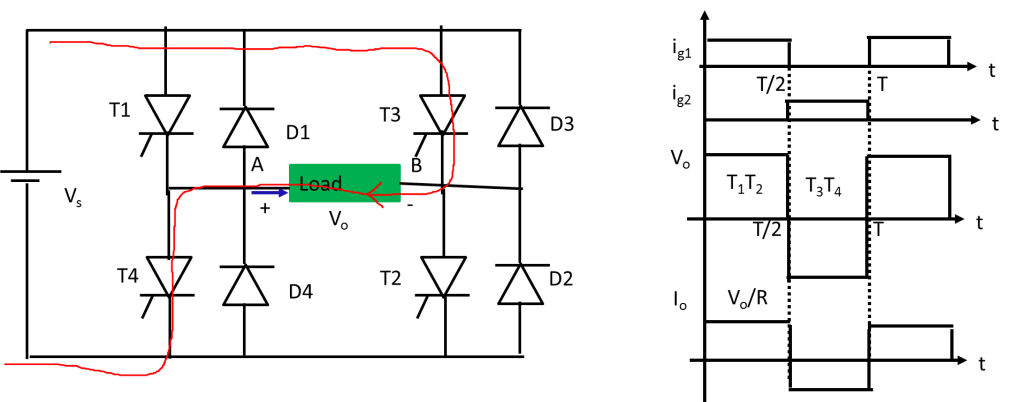
Fourier analysis of output voltage of full bridge inverter
The output voltage of the inverter is a periodic function. It is a square wave with a frequency (1/T). We are more concerned about the fundamental component which contributes to useful work. We want to remove the unwanted other harmonic components. Hence a fourier analysis on the output voltage waveform can help to identify the harmonics and eliminate it.
Fourier series is an infinite series used to represent a periodic function.

It is not difficult to find the Fourier coefficients if we know the symmetry of inverter output waveform . The inverter output voltage waveform exhibits odd symmetry and half wave symmetry. In such cases, only odd harmonics exists and coefficients ao and an will be zero.
Effect of waveform symmetry on Fourier coefficient
since ao, an are zero, we have to calculate only bn.
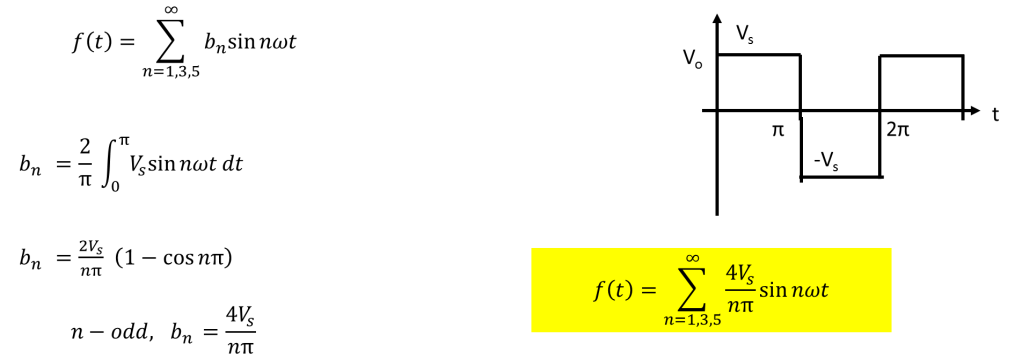
Performance parameters
it is necessary to find the total harmonic distortion in the output voltage waveform. An inverter is desired to produce a sinusoidal waveform, but actually it prodeuces a square wave output.
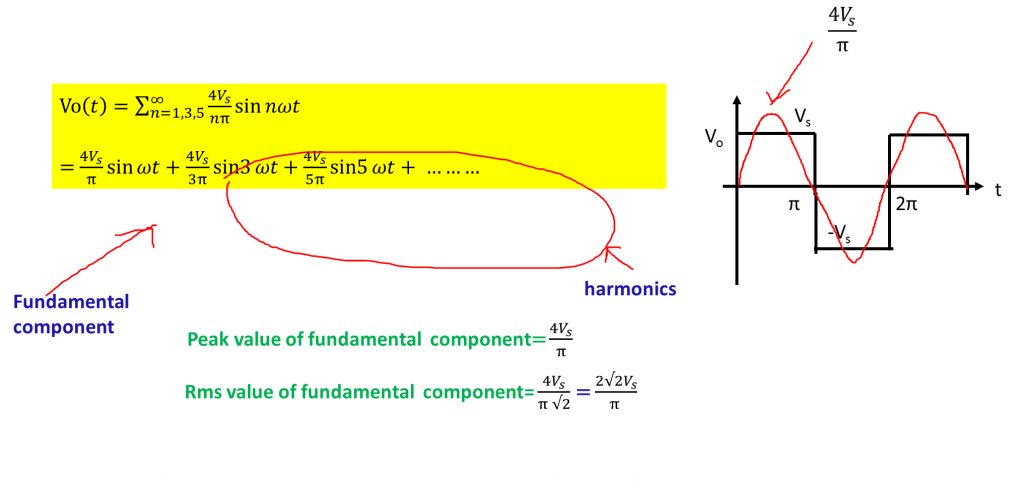
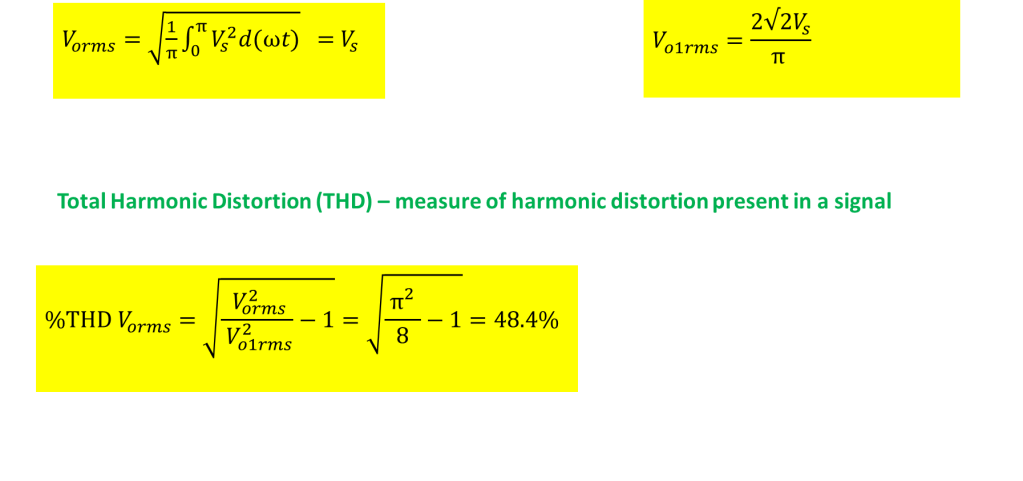
if we find the total harmonic distortion in the inverter output voltage waveform, it is a very high value 48.4%. and its value is independent of the magnitude of the output voltage.
Single-phase full bridge inverter-RL load
The property of the inductance is that it will not allow to change its current direction instantaneously. So it is necessary to use feedback diodes in anti parallel with the switches to allow bidirectional current. In case of L load, the current through the inductor will be a triangular waveform as a dc voltage is applied across the inductor. Same is the case with RLC load (overdamped).Depending upon the RLC values a sinusoidal waveform appear as the current waveform. In this case also current lags the voltage. Operation of the inverter remains same as the RL load.
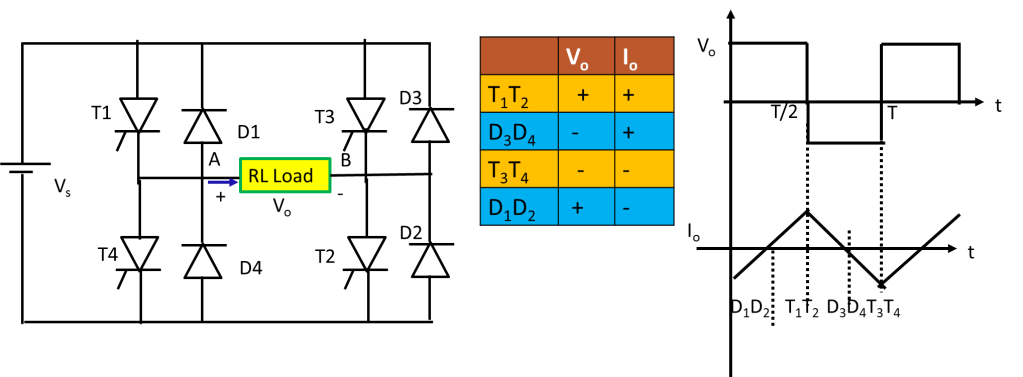
Single-phase full bridge inverter-RLC load (underdamped)
In this case, the current leads the voltage by an angle. The current through the thyristor T1T2 becomes zero before T3T4 are gated. This leads to load commutation where T1T2 is turned off without any forced commutation circuit.
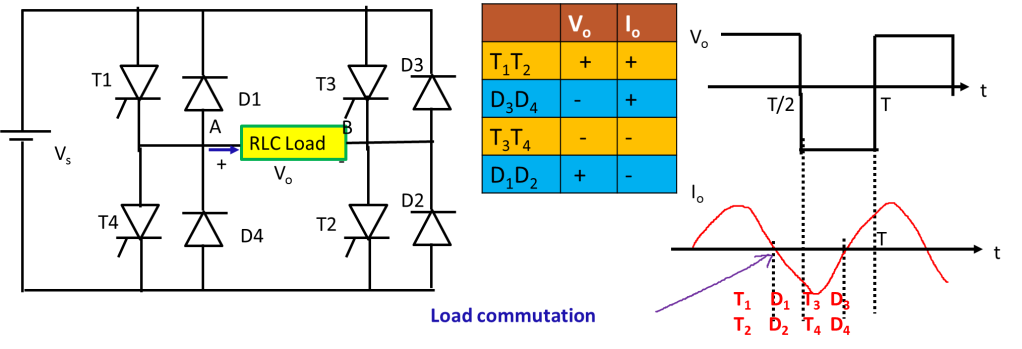
In all the cases, we can observe that the output voltage remains the same while the output load current shape depends on the nature of the load.
Points to remember
- VSI-Output voltage is independent of nature of load
- Output current depends on the load type.
- Inverter output -only odd harmonics exist
- Magnitude of fundamental component > magnitude of inverter output voltage
- THD is independent of output voltage magnitude